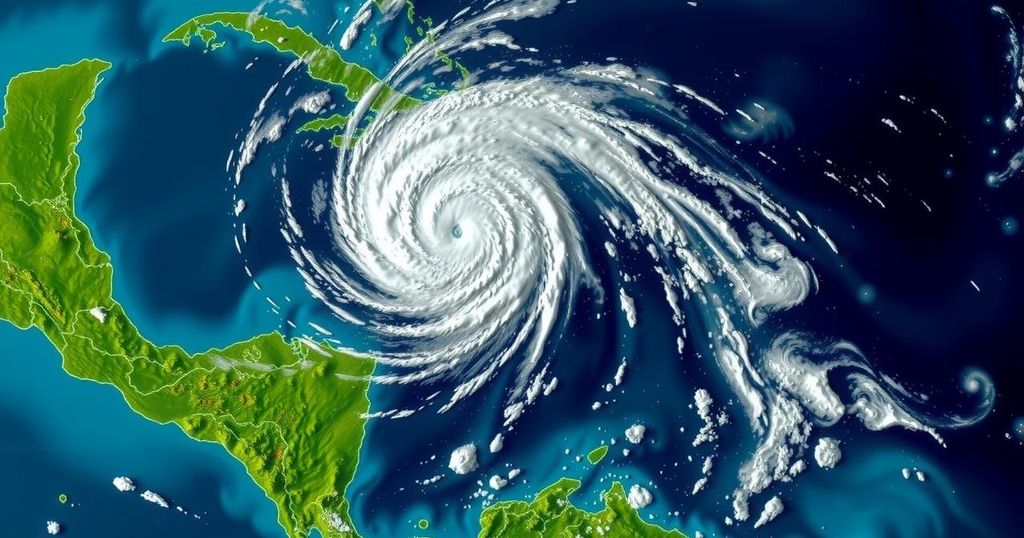Tropical Storm Sara Leaves Death and Destruction in Central America

Tropical Storm Sara has caused four fatalities and affected thousands in Honduras and Nicaragua. The storm led to extensive flooding, destroyed homes, and significantly damaged agricultural land in the region. In addition to the fatalities, prior rainfall claimed six lives in Costa Rica, marking a severe weather pattern in the area.
Tropical Storm Sara has tragically resulted in the deaths of four individuals and has impacted thousands in both Honduras and Nicaragua as it traversed northern Central America. In Honduras, which has been identified as the most severely affected nation, authorities reported two casualties, including a three-year-old child who was swept away by rising waters. The storm has affected over 123,000 residents, leading to the destruction of more than 200 homes and the damage of approximately 3,200 others. Additionally, nine bridges were lost to the swift currents, and landslides were reported on several roads, with significant harm to agricultural crops noted.
In Nicaragua, approximately 5,000 individuals were impacted, with 1,800 homes experiencing flooding due to a rise in 25 rivers. This disaster follows two weeks of heavy rainfall prior to the formation of Hurricane Sara, which had already claimed six lives and left four individuals missing in Costa Rica, where more than 54 landslides were recorded and nearly 5,000 people were treated by emergency responders.
As it moved through Belize, Sara was downgraded to a tropical depression upon reaching southern Mexico, as reported by the U.S. National Hurricane Center. Sara is recognized as the 18th named storm of the Atlantic hurricane season and the third to emerge in November. There are no expectations for further tropical storm formations in the coming week, and the hurricane season is set to conclude at the end of this month. The National Oceanic and Atmospheric Administration (NOAA) indicates that a typical hurricane season includes an average of 14 named storms, seven hurricanes, and three major hurricanes, predicting that the 2024 season could see an increase in such occurrences.
Tropical Storm Sara underscores the vulnerability of Central American nations to severe weather events, particularly in light of climate change’s impact on storm intensity and frequency. Historical data indicates that Central America is susceptible to flooding and landslides during hurricane season, which generally runs from June through November. The region has experienced significant rainfall prior to this storm, exacerbating the situation and leading to devastating impacts on infrastructure, agriculture, and local communities. Understanding these conditions provides critical insight into the ongoing challenges faced by the affected populations.
In summary, Tropical Storm Sara has inflicted serious casualties and widespread destruction in Honduras and Nicaragua, affecting thousands of lives and displacing many. The storm’s aftermath highlights the need for resilience and preparedness in the face of natural disasters, as Central America continues to grapple with the severe consequences of climate-related events. Moving forward, enhancing emergency response systems and infrastructure are essential for mitigating future risks associated with such storms.
Original Source: www.aa.com.tr








